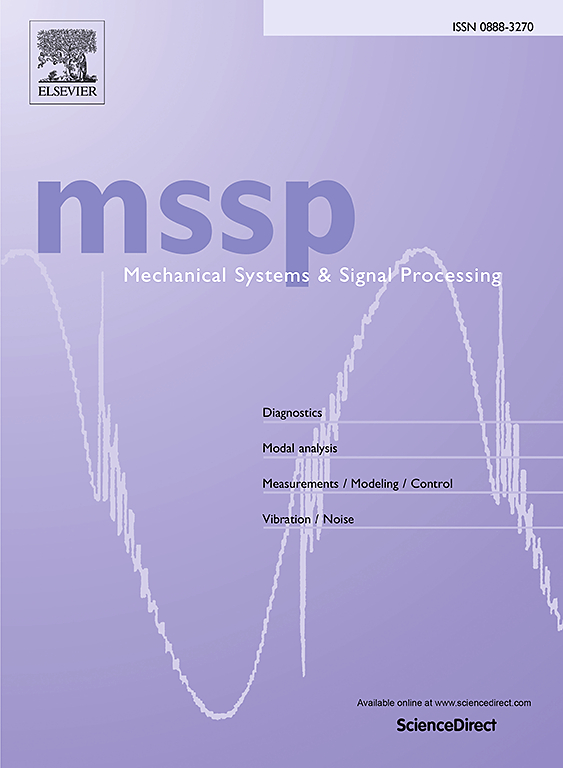Transient mixed elastohydrodynamic performance of journal bearings in wind turbine gearbox during start-up considering multi-component elastic deformations
IF 7.9
1区 工程技术
Q1 ENGINEERING, MECHANICAL
引用次数: 0
Abstract
To improve the torque density of wind turbine gearboxes (WTG), planet gear roller bearings are being replaced by planet gear journal bearings (PGJBs). However, the low rotational speeds, wide load variations, and varying operating conditions during startup significant challenges to the performance of PGJB. In this paper, a transient mixed elastohydrodynamic (EHD) model of PGJBs during start-up is proposed, which comprehensively considers multi-component elastic deformations, misalignment, and intermediate oil return groove (IORG) characteristics. Specifically, the dynamic rotational speed, meshing force, and moment of the planet gear, extracted from the wind turbine drivetrain model, serve as inputs for the PGJB. The influence mechanism of the IORG, radial clearance, and modification parameters on the transient EHD performance of PGJB is investigated, followed by experimental validation. Results indicate that the IORG effectively mitigates misalignment in PGJBs while simultaneously inducing earlier contact and significantly increasing both film and contact pressures. This leads to a multi-regime lubrication distribution at the PGJB interface and further influences its contact characteristics. During startup, the primary load-bearing regions maintain hydrodynamic lubrication, whereas the IORG-affected zones transition from mixed lubrication during mid-startup to boundary lubrication under rated operating conditions. Contact occurs in the edge region of the PGJB when the modification depth is less than 30 μm, and shifts to the IORG region at greater depths.
考虑多分量弹性变形的风电齿轮箱滑动轴承启动瞬态混合弹流特性
为了提高风力发电机齿轮箱(WTG)的转矩密度,行星齿轮轴向轴承(pgjb)正在取代行星齿轮滚子轴承。然而,在启动过程中,低转速、大负载变化和不同的操作条件对PGJB的性能提出了重大挑战。综合考虑多分量弹性变形、错位和中间回油槽(IORG)特性,建立了PGJBs启动过程中的瞬态混合弹流动力学模型。具体来说,从风力涡轮机传动系统模型中提取的行星齿轮的动态转速、啮合力和力矩作为PGJB的输入。研究了IORG、径向间隙和改性参数对PGJB瞬态EHD性能的影响机理,并进行了实验验证。结果表明,IORG有效地减轻了PGJBs的错位,同时诱导了更早的接触,并显着增加了膜和接触压力。这导致了PGJB界面上的多工况润滑分布,并进一步影响了其接触特性。在启动过程中,主要承载区域保持流体动力润滑,而在额定工况下,iorg影响区域从启动中期的混合润滑过渡到边界润滑。当改性深度小于30 μm时,接触发生在PGJB的边缘区域,当改性深度大于30 μm时,接触转移到IORG区域。
本文章由计算机程序翻译,如有差异,请以英文原文为准。
求助全文
约1分钟内获得全文
求助全文
来源期刊

Mechanical Systems and Signal Processing
工程技术-工程:机械
CiteScore
14.80
自引率
13.10%
发文量
1183
审稿时长
5.4 months
期刊介绍:
Journal Name: Mechanical Systems and Signal Processing (MSSP)
Interdisciplinary Focus:
Mechanical, Aerospace, and Civil Engineering
Purpose:Reporting scientific advancements of the highest quality
Arising from new techniques in sensing, instrumentation, signal processing, modelling, and control of dynamic systems
 求助内容:
求助内容: 应助结果提醒方式:
应助结果提醒方式:


